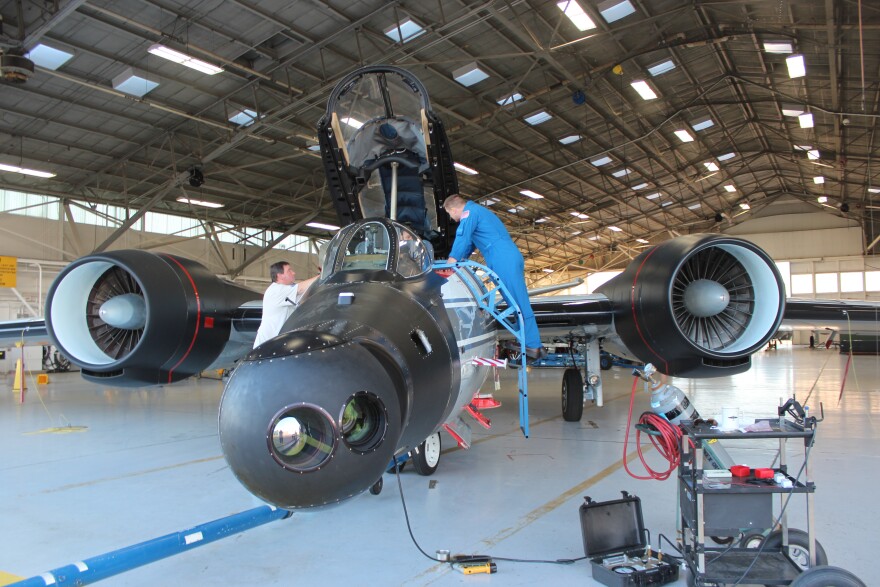Next Monday's eclipse brings total darkness on a path mirroring one from 99 years ago, and it affords U.S. scientists a unique opportunity on their home court.
In short, the sun is too bright to study the planet Mercury and the Sun's corona. No Sun means they can see both, but only for about two minutes and 40 seconds.
NASA and Southwest Research Institute, however, are going to get as much as four minutes of high-quality viewing by chasing the darkness across Tennessee, Missouri, and Illinois at 460 miles per hour in a couple of high-altitude jets.
Each plane will gather nearly four minutes of tape, and scientists will be able to string them together for more than 7 minutes of recorded observations.
This pales in comparison to the 1973 mission that chased the eclipse with the supersonic Concord jet for more than 70 minutes of darkness.
https://vimeo.com/158093891">Concorde Chases An Eclipse (1973) from https://vimeo.com/user46808059">Alex Pasternack on Vimeo.
Researchers have mounted telescopes and cameras into the nose cones of two WB-57s, the heir to the B-57 bomber. They want to find out why the Sun's corona -- or the gaseous envelope around the surface -- is so structured, and why it is so much hotter than the surface, says SwRI's Amir Caspi.
"That kind of temperature inversion is something that is not usually found in classical thermodynamics, so we're trying to understand how the energy is getting into the corona to heat it," Caspi says.
Referencing the Concord flight, Caspi says the turbulence from supersonic would severely impact the telescopes.
Caspi -- who is principal investigator on the project -- says there are a few theories including small micro bursts from the surface that shoots heat into the corona but isn't readily seen.
Being able to better predict space weather caused by solar flares and mass ejections that cause danger to satellites, the power grid, and airplanes is important says Caspi.
"Trying to understand the source and evolution of these space weather hazards begins with understanding the corona," he says.
The planes will also collect data on Mercury, creating a heat map of the planet. By observing how quickly the planet loses heat they can start to speculate about what makes up the surface.
Caspi says he won't be able to fly in the two-man jet, and instead will watch a monitor at Houston's Ellington field, where the planes will depart from.


